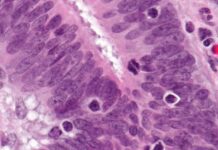ViiV Healthcare presented 48-week data from the phase IIIb, open-label, international, multi-centre ARIA study which showed superior efficacy for Triumeq® (dolutegravir/abacavir/lamivudine) compared with atazanavir boosted with ritonavir (ATV/r) plus tenofovir disoproxil fumarate/emtricitabine (TDF/FTC) in 495 treatment-naïve women living with HIV.
1 Results show statistically superior viral suppression (HIV-1 RNA <50 c/mL) rates at week 48: 82% versus 71% (adjusted difference 10.5%, 95% CI: 3.1%-17.8%, p=0.005) respectively.1ARIA was a non-inferiority study with a pre-specified analysis for superiority. Both non-inferiority and superiority endpoints were met, with superiority being driven by lower rates of both virological failures and discontinuations due to adverse events (AEs) in the dolutegravir/abacavir/lamivudine group.1
“Women account for over half of the almost 35 million adults living with HIV worldwide, yet unfortunately they are consistently under-represented in HIV clinical trials.” said John C Pottage, Jr, MD, Chief Scientific and Medical Officer, ViiV Healthcare. “For this reason, we are committed to ensuring that the specific treatment needs of women are investigated. This trial not only provides physicians with important additional information about Triumeq, it also builds on the strong body of evidence supporting the efficacy of dolutegravir-based regimens in a broad range of patient populations.”
The safety profile of dolutegravir/abacavir/lamivudine was favourable compared to ATV/r plus TDF/FTC, with fewer drug-related adverse events (AEs) reported on the dolutegravir/abacavir/lamivudine arm (33% vs 49%); there were also fewer AEs leading to discontinuation compared to those in the ATV/r plus TDF/FTC arm (4% vs 7%).1
Drug-related AEs reported in the dolutegravir/abacavir/lamivudine arm included, nausea (31 individuals / 13%), diarrhoea (12 / 5%), headache (5 / 2%) and dyspepsia (4 / 2%).1 In the ATV/r plus TDF/FTC group, drug-related AEs included nausea (35 / 14%), diarrhoea (18 / 7%), ocular icterus (18 / 7%), dyspepsia (15 / 6%), headache (14 / 6%) and jaundice (13 / 5%).1
There were fewer subjects meeting virologic non-response criteria (VL >50c/mL) in the dolutegravir/abacavir/lamivudine arm (6%) compared to the other group (14%) at week 48.1 Of the women that met protocol-defined virologic withdrawal criteria, none on the dolutegravir/abacavir/lamivudine arm had treatment-emergent resistance mutations to the components of dolutegravir/abacavir/lamivudine, compared with one in the comparator group.1
About HIV
HIV stands for the Human Immunodeficiency Virus. Unlike some other viruses, the human body cannot get rid of HIV, so once someone has HIV they have it for life. There is no cure for HIV, but effective treatment can control the virus so that people with HIV can enjoy healthy and productive lives.2
About HIV in women
Globally, HIV/AIDS is the leading cause of death for women of reproductive age (15–44 years old)3 and infection rates in young women (aged 15-24) are twice as high as those seen in young men.4 Despite the scale of the challenge, women are routinely under-represented in HIV clinical trials.5 This may be in part due to lack of child-care services, exclusions from study protocols due to the potential for pregnancy and lack of support in the home.5 As a result there are gaps in our knowledge about issues regarding antiretroviral treatments that are particular to women.5
About Triumeq®
Triumeq is a once-daily dolutegravir-based regimen, containing the un-boosted integrase strand transfer inhibitor (INSTI) dolutegravir and the nucleoside reverse transcriptase inhibitors (NRTIs) abacavir and lamivudine.
Two essential steps in the HIV life cycle are replication – when the virus turns its RNA copy into DNA – and integration – the moment when viral DNA becomes part of the host cell’s DNA. These processes require two enzymes called reverse transcriptase and integrase. NRTIs and INSTIs interfere with the action of the two enzymes to prevent the virus from replicating. This decrease in replication will lead to less virus being available to cause subsequent infection of uninfected cells.
ViiV Healthcare Global/US
Sébastien Desprez+44 7920 567 707
Media enquiries:
Patricia O’Connor
+44 208 047 5982
Marc Meachem
+1 919 483 8756
GSK Global Media enquiries:
Simon Steele
+44 (0) 20 8047 5502
Claire Brough
+44 (0) 20 8047 5502
Catherine Hartley
+44 (0) 20 8047 5502
David Daley
+44 (0) 20 8047 5502
Sources:
1. C. Orell et al. Superior efficacy of dolutegravir/abacavir/lamivudine (DTG/ABC/3TC) fixed dose combination (FDC) compared with ritonavir (RTV) boosted atazanavir (ATV) plus tenofovir disoproxil fumarate/emtricitabine (TDF/FTC) in treatment-naïve women with HIV-1 infection (ARIA Study). Presented at the International AIDS Conference, 18-22 July, Durban, South Africa. Abstract #10215.
2. World Health Organization (WHO). 2015. HIV/AIDS media fact sheet. Available at: http://www.who.int/mediacentre/factsheets/fs360/en/ Last accessed July 2016.
3. UNAIDS, 2016-2021 Strategy On the Fast-Track to end AIDS. Available at: http://www.unaids.org/sites/default/files/media_asset/20151027_UNAIDS_PCB37_15_18_EN_rev1.pdf Last accessed July 2016.
4. UNAIDS Factsheet – Adolescents, young people and HIV. Available at: http://www.unaids.org/sites/default/files/en/media/unaids/contentassets/documents/factsheet/2012/20120417_FS_adolescentsyoungpeoplehiv_en.pdf. Last accessed July 2016.
5. Curno, J. Mirjam et al. A Systematic Review of the Inclusion (or Exclusion) of Women in HIV Research: From Clinical Studies of Antiretrovirals and Vaccines to Cure Strategies. JAIDS Journal of Acquired Immune Deficiency Syndromes. 2016 Feb 1;71(2):181-8.
6. ClinicalTrials.gov (NCT01910402). Available at: https://clinicaltrials.gov/ct2/show/NCT01910402. Last accessed June 2016.
7. Raffi F, Jaeger H, Quiros-Roldan E, Albrecht H, Belonosova E, Gatell JM, Baril J-G, Domingo P, Brennan C, Almond S, Min S, for the SPRING-2 Study Group. Once-daily dolutegravir versus twice-daily raltegravir in antiretroviral-naive adults with HIV-1 infection (SPRING-2 study): 96 week results from a randomised, double-blind, non-inferiority trial. Lancet Infect Dis. 2013;13(11):927-935.
8. Walmsley S, Baumgarten A, Berenguer J, et al. Brief Report: Dolutegravir plus abacavir/lamivudine for the treatment of HIV-1 infection in Antiretroviral therapy-naïve patients: Week 96 and Week 144 Results from the SINGLE randomized clinical trial. JAIDS. 2015;70(5):515-519.
9. Molina J, et al. Once-daily dolutegravir versus darunavir plus ritonavir for treatment-naive adults with HIV-1 infection (FLAMINGO): 96 week results from a randomised, open-label, phase 3b study. Lancet HIV. 2015;2:e127-136.
10. Cahn P, Pozniak AL, Mingrone H, Shuldyakov A, Brites C, Andrade-Villanueva JF, Richmond G, Buendia CB, Fourie J, Ramgopal M, Hagins D, Felizarta F, Madruga J, Reuter T, Newman T, Small CB, Lombaard J, Grinsztejn B, Dorey D, Underwood M, Griffith S, Min S, for the extended SAILING Study Team. Dolutegravir versus raltegravir in antiretroviral-experienced, integrase-inhibitor-naive adults with HIV: week 48 results from the randomised, double-blind, non-inferiority SAILING study. Lancet. 2013;382(9893):700 -708.
11. Castagna S, et al. Dolutegravir in antiretroviral-experienced patients with raltegravir- and/or elvitegravir-resistant HIV-1: 24-week results of the Phase III VIKING-3 study. J Infect Dis. 2014;210:354–62.
12. Triumeq® (dolutegravir/abacavir/lamivudine) US prescribing information. Available at: https://www.gsksource.com/pharma/content/dam/GlaxoSmithKline/US/en/Prescribing_Information/Triumeq/pdf/TRIUMEQ-PI-MG.PDF


















